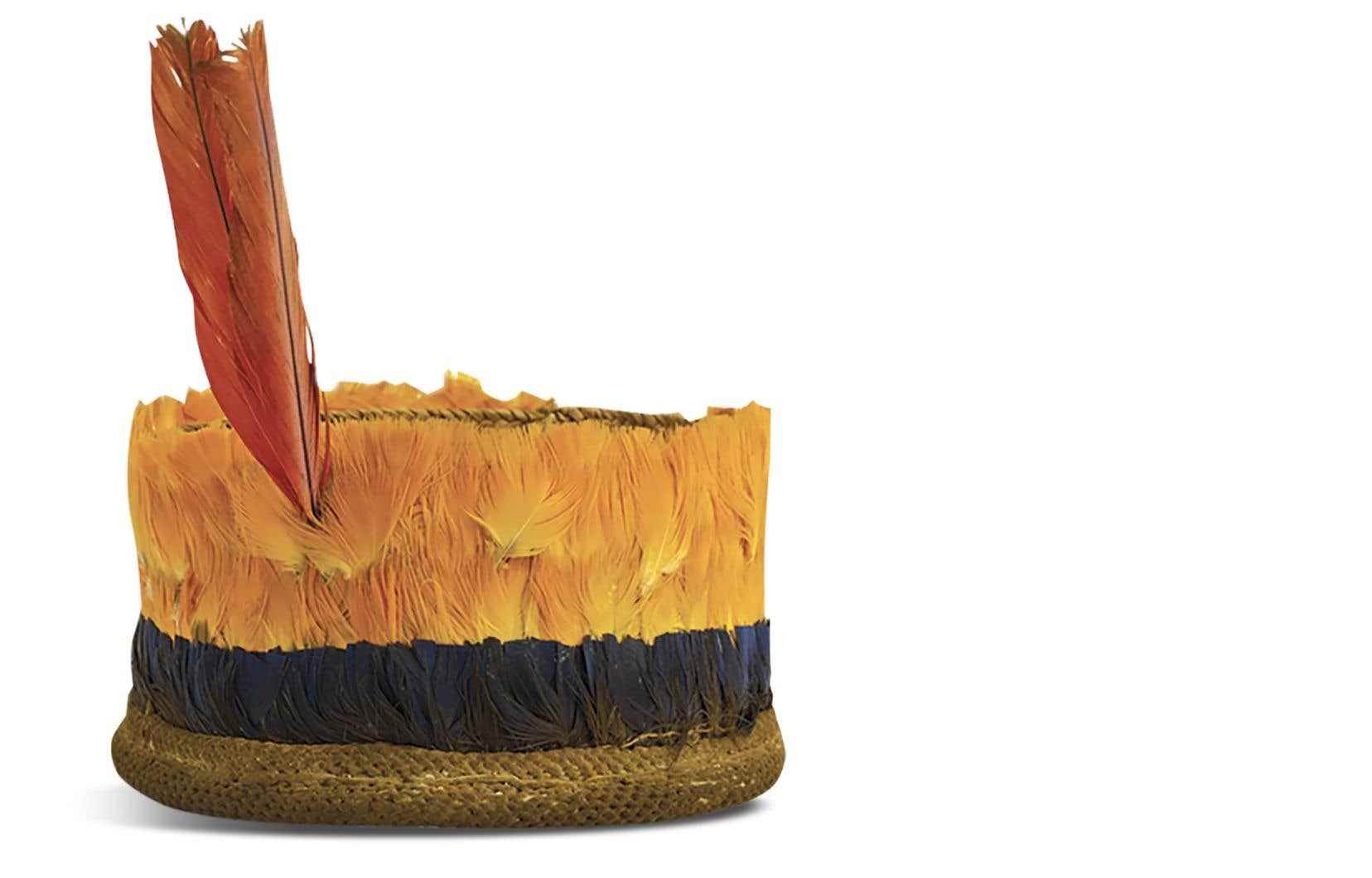This text is part of the special section Museums
Since November 17, the Pointe-à-Callière museum presents The world in mind. The Antoine de Galbert collectiona singular exhibition that brings together more than 300 headgear from 50 countries in America, Oceania, Africa and Asia.
Through these headdresses and headdresses, the Montreal museum hopes to offer a window on the great cultural diversity of the world. “It’s quite surprising as a type of collection, but it’s a unique opportunity for Montreal to be able to present this exceptional corpus,” says Anne Élisabeth Thibault, general manager of Pointe-à-Callière (PAC), city of archeology and history of Montreal.
Brought together by the collector and patron of current and contemporary art Antoine de Galbert, these headdresses already occupied a showroom at La maison rouge, a foundation and exhibition center for contemporary art located in Paris and led by de Galbert, surprising with the exhibitions usually devoted to contemporary space art. “Over the years, Antoine de Galbert has developed a curiosity for the cultures of the world and their objects, such as the headdress”, says Ms.me Thibault. When it closed in 2018, La maison rouge donated the collection of 500 extra-European headgear to the Musée des confluences in Lyon, which has ensured the continuity, documentation and preservation of the objects ever since.
Acquired mainly in France through a network of art galleries, antique dealers and collectors, the headdresses date from the 18e in the 21ste century, most having been made in the 19the. Today, the establishment offers the opportunity to exhibit them in Montreal, in the city’s only archeology museum. “At the museum, we have objects so old that these headdresses seem contemporary to us”, laughs Mme Thibault.
From here as elsewhere
Thanks to an enveloping and immersive scenography, the visitor is invited to follow a discovery trail that brings together 13 themes. “What we wanted to highlight is the plurality of cultures through an object that is common to all of humanity, the headgear”, indicates the director. Physically protective headdresses, for example, many of which are imported from Asia, bear certain symbols intended to protect against invisible forces, thus going beyond mere practical protection from the sun and the weather. The large hats worn in the rice fields of Japan and China, for example, are decorated with protective embroidery, while other, smaller ones are reserved for children, considered particularly vulnerable to occult forces.
Other headdresses are grouped under the theme of ceremony or even identity, reserved for example for the men or women of the ethnocultural groups represented in the exhibition. “Some Thai headdresses have elements and details symbolizing wealth or fertility,” says Ms.me Thibault. Chef’s headdresses, wedding headdresses, or very expressive headdresses reserved for the show are other themes addressed at the Pointe-à-Callière museum.
Beyond cultural affiliations, some headdresses are also part of the current or contemporary world when they are created. “We also feel the globalization of markets through the headdresses,” emphasizes Anne Élisabeth Thibault. A stripe-shaped dance cap from Oceania, for example, is inspired by those worn by the German Navy between 1884 and the start of World War I, when Germany colonized parts of the north- east of New Guinea.
Elsewhere, headdresses adorned with large colorful feathers fashioned by peoples of the Amazon catch the eye. These headdress crests, tiaras and other ornaments recall the birds of the Brazilian forest, but also the exhibition Amazonia. The shaman and the thought of the forest held at PAC in 2017. “It’s a varied journey that allows you to open a door to the different cultures of the world in a single exhibition”, sums up the general manager. The exhibition includes keys to interpretation in the form of images, archival videos, projections and interactive elements that highlight the different cultures represented through the objects.
For the museum, whose mission is to “make the Montréal of yesterday and today loved and known”, it is also an opportunity to represent the many cultural communities of the metropolis. “There is a very strong connection between the objects that are presented and Montreal cultures,” says Ms.me Thibault. “Through this exhibition, the public can learn a little more about the metropolis and its inhabitants. It will warm the hearts of Montrealers during the winter period,” she concludes. The headdresses will leave Old Montreal in mid-March 2023.
This special content was produced by the Special Publications team of the To have to, pertaining to marketing. The drafting of To have to did not take part.
